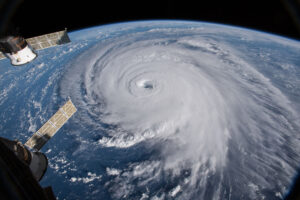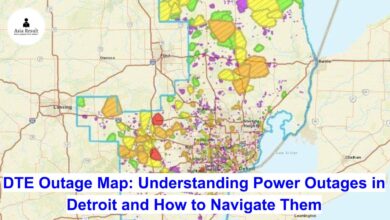Florida Under Warnings as Likely Tropical Storm Debby Set to Bring Flooding Rain

As of today, Florida is under significant threat from a disturbance that has been designated as Potential Tropical Cyclone Four. This system is projected to evolve into Tropical Storm Debby, posing a serious risk to the Sunshine State. The National Hurricane Center (NHC) has already issued Tropical Storm Warnings and Watches for various regions, indicating the severity of the situation.
Tropical Storm Warnings and Watches Issued
A Tropical Storm Warning is currently in effect for the southwest coast of the Florida Peninsula, specifically from East Cape Sable to Bonita Beach. This means that tropical storm conditions are expected within 36 hours in the warned area. Additionally, a Tropical Storm Watch has been issued for several other regions, including the Florida Keys south of the Card Sound Bridge, the southern coast of the Florida Peninsula east of East Cape Sable to the Card Sound Bridge, and the west coast of the Florida Peninsula north of Bonita Beach to Aripeka. These areas should prepare for the possibility of tropical storm conditions within 48 hours.
Potential Impacts of Tropical Storm Debby
The primary concerns with Tropical Storm Debby are torrential rain, strong winds, and the potential for a storm surge. Residents in the affected areas should brace for heavy rainfall, which can lead to significant flooding, especially in low-lying regions. Wind speeds could reach up to 60 mph, causing damage to structures, downed trees, and power outages. Moreover, the storm surge could lead to coastal flooding, particularly in areas that are already prone to such events.
Preparing for the Storm
It is crucial for residents in the warning and watch areas to take immediate precautions. Here are some steps to consider:
- Secure Outdoor Items: Ensure that any loose items, such as patio furniture, trash bins, and gardening tools, are secured or brought indoors to prevent them from becoming projectiles.
- Stock Up on Essentials: Have enough supplies, including water, non-perishable food, medications, and batteries, to last at least three days.
- Review Evacuation Plans: Know your evacuation routes and have a plan in place in case you need to leave your home. Make sure your vehicle is fueled and ready.
- Stay Informed: Keep up to date with the latest information from the National Hurricane Center and local authorities. Follow their guidance and heed any evacuation orders.
Historical Context of Tropical Storms in Florida
Florida is no stranger to tropical storms and hurricanes. The state’s unique geographical location makes it a frequent target for these powerful weather systems. Historical data shows that Florida has experienced numerous storms, each with varying degrees of impact. Some notable storms include Hurricane Andrew in 1992, which caused extensive damage in South Florida, and more recently, Hurricane Irma in 2017, which affected the entire state.
Climate Change and Storm Intensity
The increasing intensity and frequency of tropical storms and hurricanes can be attributed to climate change. Warmer ocean temperatures provide more energy for storms, resulting in stronger winds and heavier rainfall. Scientists have observed that storms are also moving more slowly, leading to prolonged periods of rain and increased flooding risks. It is essential for communities, especially in coastal areas, to adapt to these changing patterns and enhance their resilience to such events.
Community Response and Support
In times of natural disasters, community support plays a vital role in recovery efforts. Local governments, non-profit organizations, and volunteers often come together to provide aid and assistance. This includes setting up shelters for evacuees, distributing supplies, and offering medical and psychological support. Residents are encouraged to participate in community preparedness activities and to look out for their neighbors, particularly the elderly and those with special needs.
Government and Emergency Services
Federal, state, and local governments work in tandem to ensure a coordinated response to tropical storms and hurricanes. The Federal Emergency Management Agency (FEMA) provides resources and support to affected areas, while state agencies like the Florida Division of Emergency Management oversee the implementation of emergency plans. Local authorities are responsible for issuing evacuation orders, setting up shelters, and communicating with the public.
Conclusion
As Potential Tropical Cyclone Four threatens to become Tropical Storm Debby, it is imperative for residents of Florida to stay vigilant and prepared. The combination of heavy rainfall, strong winds, and possible storm surge poses a significant risk to life and property. By taking proactive measures and staying informed, individuals can mitigate the impact of the storm and ensure their safety.





One Comment